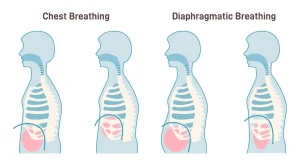
Breathing and Diastasis Recti: Understanding the Connection and Finding Relief
If you have diastasis recti (DR), you may notice a change in your breathing patterns or even experience shortness of breath. The connection between breathing

If you have diastasis recti (DR), you may notice a change in your breathing patterns or even experience shortness of breath. The connection between breathing

Having a flat stomach with Diastasis Recti is a topic that comes up almost every week in the form of an email or a post

If you’ve been diagnosed with diastasis recti (DR), figuring out how to keep moving without making things worse is a challenge. Thankfully, DR is very

Healthcare professionals–including doctors, coaches, and doulas–have you been confused about how to help your patients and clients with diastasis recti? Is surgery the best and

While it’s relatively easy to assess yourself for diastasis recti, what do you do about it? PT is great; pressing play on a video at

If you’ve recently discovered that you have a diastasis recti, you might be wondering whether you can keep up your regular workout routine. With the

Although many people think of it as a postpartum healing problem, diastasis recti is not a strictly postpartum issue. Read on to learn how to

Diastasis recti is a complicated injury. Some people will go through rehab fully dedicated to restoring their core function and still have a gap. The

There is a lot of information out there concerning diastasis recti and whether or not it is “fixable” injury or preventable like in illness. The

Diastasis recti is a common condition that can occur during pregnancy and even extend postpartum. DR affects women and men in different ways and during
© 2025 RYC®. All rights reserved.